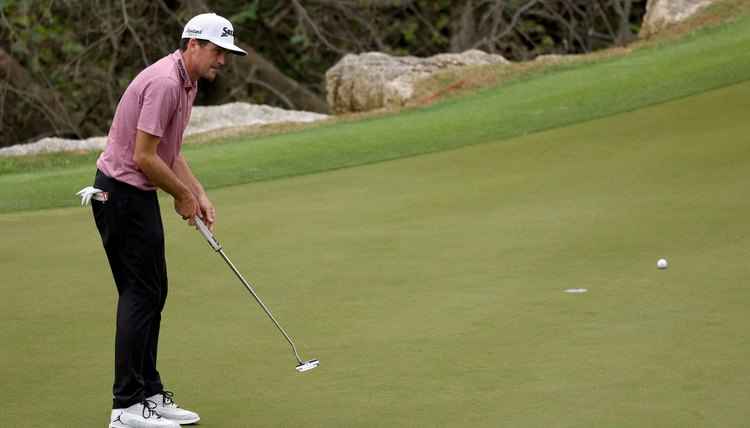Golf Handicap Vs. a Bogey Golfer

The United States Golf Association’s handicap system rates golfers according to their potential ability. The handicapper system “enables golfers of all skill levels to compete on an equitable basis,” the USGA says. A player who plays bogey golf-- i.e., someone who averages a bogey per hole, or a score of 90 for an 18 hole round of golf -- would likely have a USGA handicap index in the teens when they play golf, depending on the difficulty of the courses on which the player established the handicap.
But the USGA has its own definition of a bogey golfer, which is an integral part of the overall handicap system when looking at golf scores.
Establishing a Handicap and the Handicap Calculation
To establish a golf handicap, a player first joins a golf club or organization that participates in the USGA handicap system.
The player may receive a handicap index after posting five scores with the club’s handicap committee, although the index will eventually be based on the best 10 of the player’s most recent 20 rounds. When playing a specific course, the player then looks up his handicap index on the course’s handicap table, which will provide a course handicap to be used at that location based on its course rating.

Bogey Golfer Defined
The USGA’s Handicap Manual defines a male bogey golfer as a player with a course handicap “of approximately 20 on a course of standard difficulty,” whose tee shots travel about 200 yards down the fairway, and who can typically reach the green of a 370-yard hole in two strokes. The female equivalent has a course handicap of 24, hits tee shots 150 yards and lands on the green of a 280-yard hole in the same number of strokes as male golfers-two strokes.
Bogey Rating
The USGA’s bogey rating quantifies a course’s difficulty for a bogey golfer playing under normal conditions. The rating takes into account a course’s length and its hazards, such as its bunkers and its vegetation, and considers how they will affect an average golfer, as well as a bogey golfer.
The bogey rating is then used to help determine a course’s slope rating, which measures the difficulty of a course “for players who are not scratch golfers” when compared to scratch golfers, like most PGA Tour golfers, who have a handicap index of zero. A player’s handicap index is based in part on the slope ratings of the courses on which he plays the game of golf.

Allocation of Handicap Strokes
Each of a golf course’s holes is given a handicap number, taken into account on the final scorecard.
For example, an 18-hole course’s holes receive handicap numbers from 1 to 18. In stroke play, for example, a 1-handicap golfer receives a handicap stroke on the hole with the handicap number 1, while an 8-handicap golfer receives a handicap stroke on the holes with handicap numbers 1 through 8.
The course’s most difficult hole, however, isn’t automatically given the 1-handicap number.
Instead, course officials typically examine the average scores on each hole for two groups -- scratch and bogey golfers -- “because it is easier to see the gaps in ability,” says Teresa Saponaro, the USGA's manager of handicap score administration. The holes with the greatest scoring differentials between the two groups should receive the lowest handicap numbers, according to USGA guidelines.
Writer Bio
M.L. Rose has worked as a print and online journalist for more than 20 years. He has contributed to a variety of national and local publications, specializing in sports writing. Rose holds a B.A. in communications.
